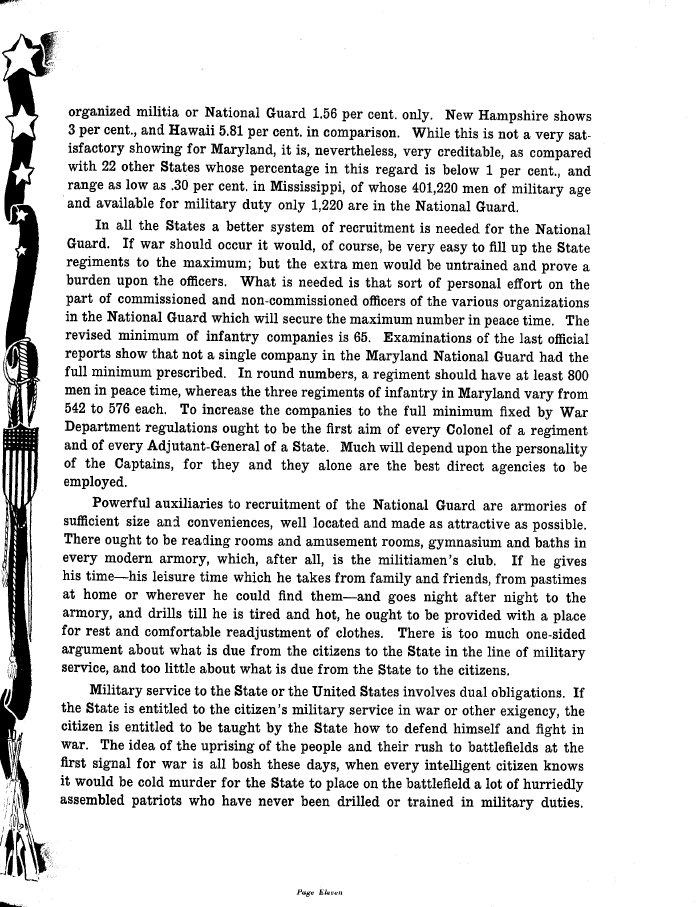 |
||||
 |
||||
| organized militia or National Guard 1.56 per cent. only. New Hampshire shows 3 per cent., and Hawaii 5.81 per cent, in comparison. While this is not a very satisfactory showing for Maryland, it is, nevertheless, very creditable, as compared with 22 other States whose percentage in this regard is below 1 per cent., and range as low as .30 per cent, in Mississippi, of whose 401,220 men of military age and available for military duty only 1,220 are in the National Guard. In all the States a better system of recruitment is needed for the National Guard. If war should occur it would, of course, be very easy to fill up the State regiments to the maximum; but the extra men would be untrained and prove a burden upon the officers. What is needed is that sort of personal effort on the part of commissioned and non-commissioned officers of the various organizations in the National Guard which will secure the maximum number in peace time. The revised minimum of infantry companies is 65. Examinations of the last official reports show that not a single company in the Maryland National Guard had the full minimum prescribed. In round numbers, a regiment should have at least 800 men in peace time, whereas the three regiments of infantry in Maryland vary from 542 to 576 each. To increase the companies to the full minimum fixed by War Department regulations ought to be the first aim of every Colonel of a regiment and of every Adjutant-General of a State. Much will depend upon the personality of the Captains, for they and they alone are the best direct agencies to be employed. Powerful auxiliaries to recruitment of the National Guard are armories of sufficient size and conveniences, well located and made as attractive as possible. There ought to be reading rooms and amusement rooms, gymnasium and baths in every modern armory, which, after all, is the militiamen's club. If he gives his time—his leisure time which he takes from family and friends, from pastimes at home or wherever he could find them—and goes night after night to the armory, and drills till he is tired and hot, he ought to be provided with a place for rest and comfortable readjustment of clothes. There is too much one-sided argument about what is due from the citizens to the State in the line of military service, and too little about what is due from the State to the citizens. Military service to the State or the United States involves dual obligations. If the State is entitled to the citizen's military service in war or other exigency, the citizen is entitled to be taught by the State how to defend himself and fight in war. The idea of the uprising of the people and their rush to battlefields at the first signal for war is all bosh these days, when every intelligent citizen knows it would be cold murder for the State to place on the battlefield a lot of hurriedly assembled patriots who have never been drilled or trained in military duties. I Page Eleven |